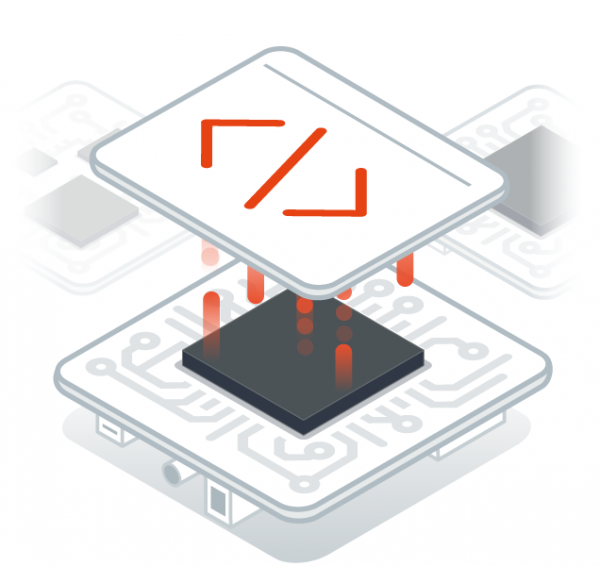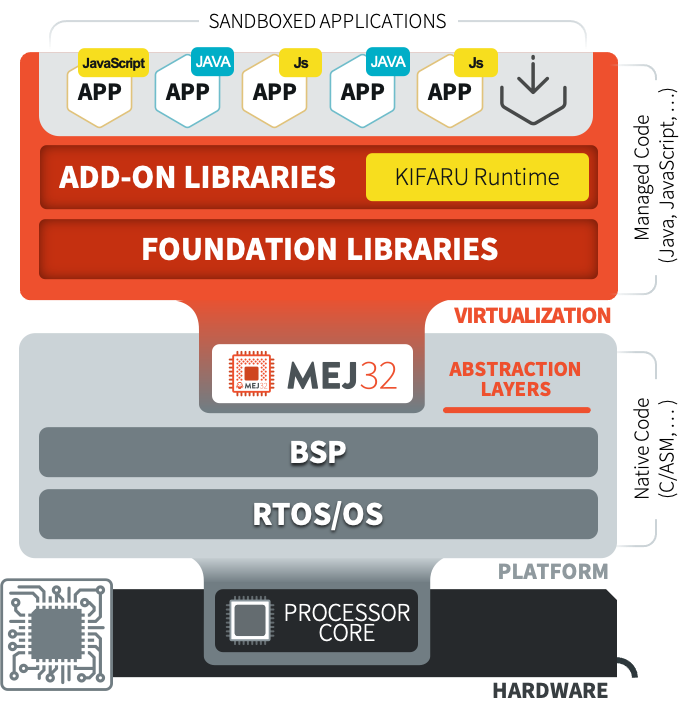MicroEJ has long supported multiple standards and specific languages (C, Java, Domain-Specific Languages) to open embedded systems development to the large mobile and cloud community.
By introducing MICROEJ Kifaru, its newest JavaScript development environment for embedded devices, MicroEJ leverages the largest ecosystem of developers on the market, making MICROEJ VEE the most accessible development framework of the embedded industry.
Kotlin support was recently announced through MicroEJ’s Android Compatibility Kit. More info
Additionally, Python programming language development framework will soon be released to embrace an even broader engineering workforce. Stay tuned or contact us for more info!

MICROEJ Kifaru makes no compromise on the security nor reliability of embedded devices: it targets the safe MicroEJ software container, enabling the application to be written in multiple languages (C, Java, JavaScript, etc.). However, all multi-language components are securely run and managed by MICROEJ VEE.

JavaScript is considered one of the easiest and most accessible languages to learn. It is highly dynamic and loosely typed, which translates into more flexibility. In addition, it makes it easier to iterate at a fast velocity to achieve quick embedded devices prototypes and applications.

Engineering teams can now benefit from one of the largest ecosystems of tools, frameworks, and libraries that can be leveraged in the development process to reduce development efforts and costs. You can use your favorite JavaScript tools with Kifaru, such as npm or Babel.

MicroEJ ensures code portability across many RTOS/OS and hardware platforms. It means that JavaScript software modules created with MICROEJ Kifaru can run ‘as is’ on various embedded devices with no modifications, resulting in a much easier evaluation process between different hardware and fast product declinations.

Discover how to collect weather and geographic coordinates and safely share the information to the Cloud through MQTT.
The application logic is written in JavaScript and relies on the JavaScript version of Paho MQTT client. Paho is retrieved with npm. The application uses the MicroEJ LocationProvider Service API to get positioning information from hardware and a REST web service to collect weather data.
For more information or to access the demo sources, contact us!